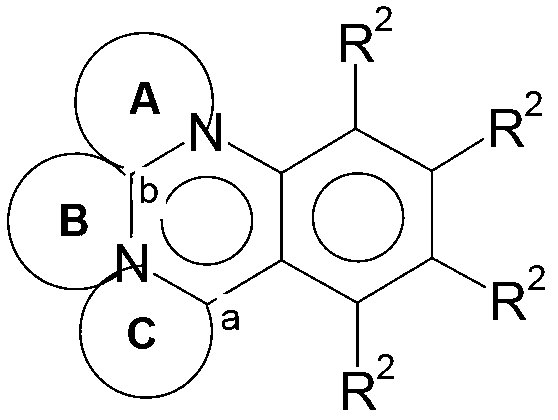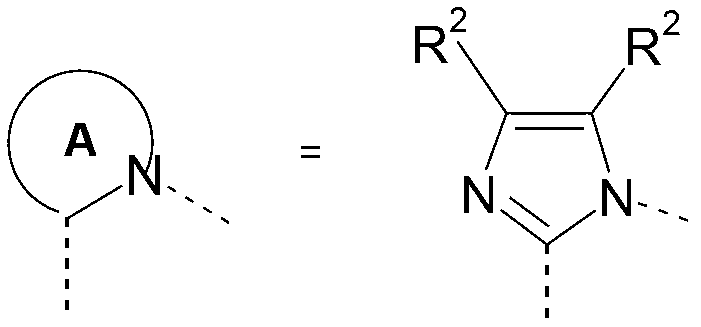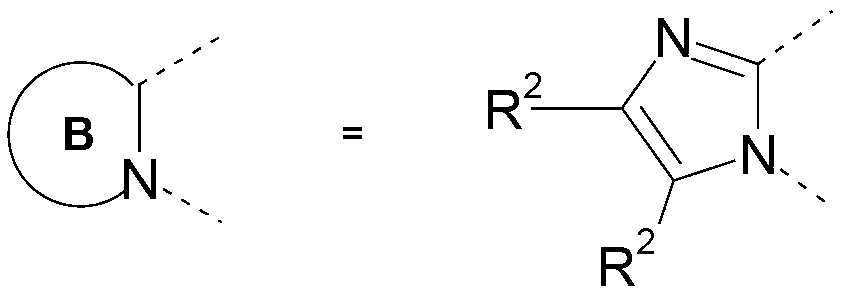Materials for electronic devices
A technology of atoms and groups, applied in the direction of electric solid devices, light-emitting materials, electrical components, etc., can solve the problems of thermal stability, non-evaporation, and high technical complexity of OLED manufacturing.
- Summary
- Abstract
- Description
- Claims
- Application Information
AI Technical Summary
Problems solved by technology
Method used
Image
Examples
Embodiment
[0230] Synthesis Example 1: 4-[4-(10-Phenylanthracene-9-yl)phenyl]-6,7,11b-Triazabenzo[c]fluorene
[0231] first step:
[0232]
[0233]First, 4000 ml of water and 648.0 g (6.0 mol) of o-phenylenediamine were introduced into a 6 L four-necked flask equipped with a mechanical stirrer, internal thermometer, dropping funnel and reflux condenser. Starting from room temperature, 369 g (6.3 mol) of cyanogen chloride were added dropwise from the dropping funnel under stirring in a cooling bath (acetone / dry ice) during 15 minutes, during which time the internal temperature of the reaction mixture increased to about 65°C. The pH was then adjusted to about 9 using 550 g of 45% sodium hydroxide solution and the mixture was cooled to 15°C in a cooling bath with stirring. The solid was filtered off, rinsed with ice water, and the 2-aminobenzimidazole was dried. Yield: 750 g (94%).
[0234] Step two:
[0235]
[0236] In a 2-L four-necked flask with a protective gas inlet, reflux...
PUM
 Login to View More
Login to View More Abstract
Description
Claims
Application Information
 Login to View More
Login to View More - Generate Ideas
- Intellectual Property
- Life Sciences
- Materials
- Tech Scout
- Unparalleled Data Quality
- Higher Quality Content
- 60% Fewer Hallucinations
Browse by: Latest US Patents, China's latest patents, Technical Efficacy Thesaurus, Application Domain, Technology Topic, Popular Technical Reports.
© 2025 PatSnap. All rights reserved.Legal|Privacy policy|Modern Slavery Act Transparency Statement|Sitemap|About US| Contact US: help@patsnap.com



